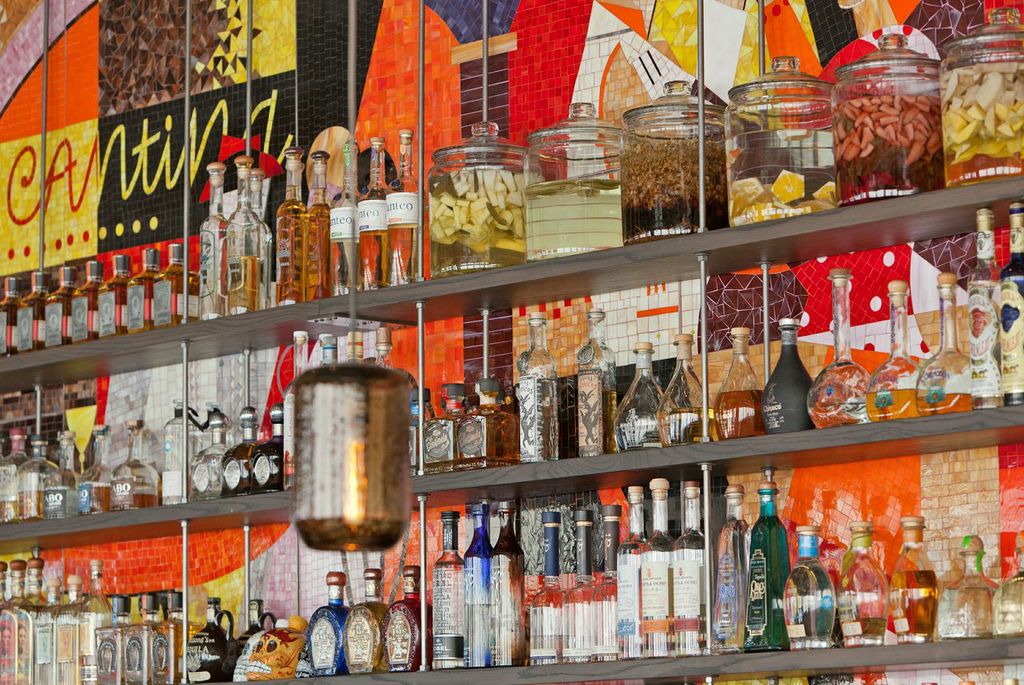The Local newsletter is your free, daily guide to life in Colorado. For locals, by locals.
Tequila is intimidating. Which varieties are best for slow sipping, and which are better off in the cocktail shaker? To bring you up to speed (just in time for Cinco de Mayo), 5280 sat down with Tamayo’s manager and tequila expert Chris Anderson to learn about this much-loved liquor.
The story behind the spirit: Tequila production began in the 16th century in Mexico’s Jalisco region. The Spanish conquistadores, having run out of their own booze, adapted the local recipe for fermenting blue agave to create the first tequilas.

Blue agaves resemble a cross between a yucca and a pineapple. When the plants are eight to 12 years old, workers shave off their spiky leaves and then haul the fruit—or piña—out of the ground. Piñas weigh between 150 and 250 pounds, so this is no easy feat. Then the piñas are roasted, often in traditional clay ovens, to convert the starches into sugars. Once cooked, the piñas are ground between massive stone wheels to release the juice, which is fermented and distilled.
What happens next determines which type of tequila you end up with. Blancos are bottled immediately after distillation, resulting in a smooth, clear spirit ideal for mixing into cocktails. Reposados get their name from the “rusted” color of tequila after it rests for two to 12 months in oak barrels. Some reposados are aged in barrels previously used for brandy or scotch (to add flavor and color to the tequila). Depending on your tastes, reposados are good for both mixing and sipping. Añejos rest for one to three years, resulting in a deeper color and stronger bite. Extra añejos take aging to the extreme, resting for more than three years. Añejos should be sipped straight, not mixed into cocktails.
Most tequilas fall into those four categories, but you might see two others on the shelves: Oros, also known as gold tequilas, hit the bottle immediately after distillation, but with various flavor additives. (These are fine for mixing.) Mezcal is tequila’s scotch-like cousin. It’s made from wild agave and has a rustic, sharp flavor.
What to order: So now that you can tell a blanco from an añejo, what should you try first? For the full experience, order Tamayo’s Herradura flight ($20). This horizontal tasting lets you sample a blanco, a reposado, and an añejo from the Herradura tequila house. (The reposado is made specifically for Richard Sandoval restaurants.) Flights are served with limes, salt, and sangrita, a salty, tomato-like palate cleanser. Not ready for a full flight? Any one of the Herraduras are fantastic on their own, but Anderson also suggests the Casa Noble añejo.
If sipping tequila just isn’t your style, turn to the cocktail list. Tamayo offers a selection of seven margaritas and six other cocktails. My favorite is the hot pink prickly pear margarita, made with cactus fruit–infused tequila. The Tamayo margarita, with tamarind purée and a chile rim, is a close second.
Cinco de Mayo specials: Celebrate the holiday on Tamayo’s rooftop. Take in the mountain views with $5 Casa Noble blanco shots, $3.50 Tecates, and serrano-hibiscus margaritas. Start celebrating early with a rooftop DJ from 7-10 p.m. on Saturday.
At home: Put your expertise to good use (aka skip the Cuervo). When mixing your own margaritas, Anderson suggests the El Tesoro. (Espolon is another a good option). No matter what you buy, pay attention to the label. Look for “100 percent blue agave,” which means the spirit is pure tequila bottled in Mexico. If you just see “tequila,” some of the sugars might come from other plants, and it could be bottled elsewhere.
—Image courtesy of Tamayo








